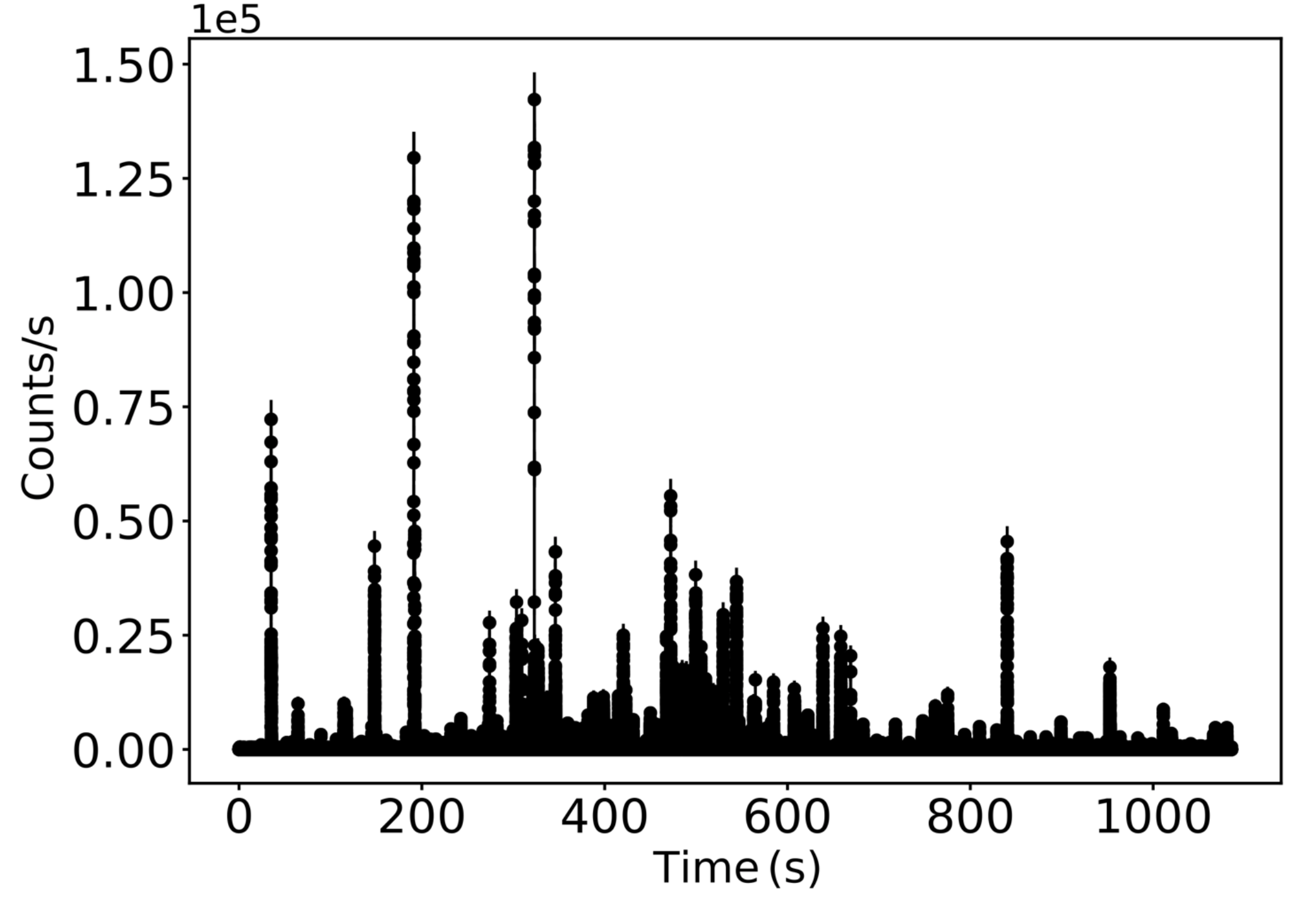NICER / ISS Science Nugget
for May 7, 2020
NICER detection of the burst forest from the magnetar SGR 1935+2154
Magnetars represent the most extreme sub-class of the neutron star family. With magnetic fields exceeding 10 billion
Tesla (where the Earth's field strength is about 50 microTeslas), these sources are the strongest magnets in the
universe, relying on this reservoir of magnetic energy to power their high energy X-ray radiation. These strong
magnetic fields also give rise to peculiar properties in magnetars, the most impressive of which are the short, hard
X-ray bursts. These are flashes of X-rays that last a few tens to hundreds of milliseconds, during which magnetars can
become the second-brightest X-ray objects in the sky, surpassed only by the Sun.
SGR 1935+2154 is a magnetar that was discovered in 2014 July after NASA's Swift satellite detected a short hard X-ray
burst from its location. This initial episode was quite modest and only a handful of bursts were detected from the
source. However, SGR 1935+2154 manifested burst-active episodes again in 2015 February, 2016 May, 2016 June, and 2019
October, each time emitting brighter bursts at higher rates. Which brings us to 2020 April 27. This latest episode,
which lasted for about a day, has seen SGR 1935+2154 emit hundreds (if not thousands) of bright magnetar bursts. NICER,
with its scheduling flexibility, was able to maneuver to the source position within 3 hours of notification, during the
midst of the outburst; the result is the light curve shown in Figure 1. Over one hundred short bursts are detected
during this short, 17-minute observation; the phenomenon is known as a magnetar "burst forest." The count rate at the
peak of the brightest burst is a staggering 150,000 counts/sec, implying a flux exceeding 3.0x10-6 erg/s/cm2, indeed
surpassing the X-ray emission from all celestial bodies at that instant, except for the Sun. This result was reported
in the Astronomer's Telegram #13478 by Younes et el.

Figure:
Light curve of the initial NICER observation of magnetar SGR 1935+2154, acquired on 2020 April 28 at 00:40:58 UTC. The
vertical axis is the number of photons per second in the 0.3-10 keV energy band. The time resolution used to create the
light curve is 4 ms. Over 100 short bursts are detected in this 17-minute long NICER look. NICER's unprecedented energy
coverage, time resolution, and high throughput will enable detailed analysis of this unique magnetar burst forest.
NICER observations of SGR 1935+2154 continued throughout April 28 and caught the initial decay of the outburst. A
noteworthy remark is that in between NICER observations, an exceptionally bright short radio burst was caught from the
direction of the source by ground-based telescopes. NICER will play an invaluable role deciphering the state of the
magnetar leading up to this radio burst, as well as its aftermath.
<< Previous
Main Index
Next >>